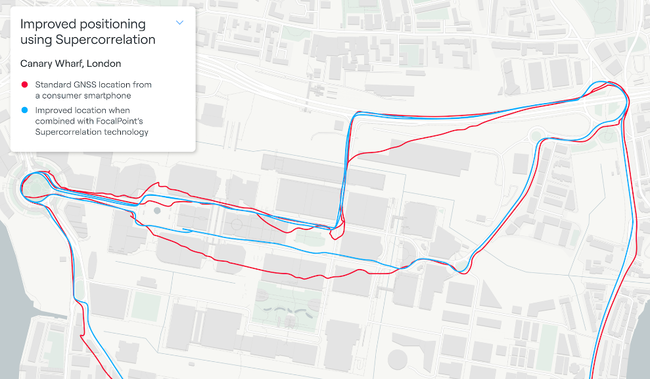Three dirty secrets about sports wearables
Ramya Sriram
2 min read
29th Apr, 2021
Wearables and fitness trackers

In a nutshell, we make GPS 10x better, outdoors and indoors. This has positive implications for those that rely on a sports wearable because compared to leading wearables on the market today, you can expect:
10x improvement in the accuracy of distance travelled
10x improvement in the accuracy of line on a map
Faster ‘ready to run’ start
More accurate first fix
10x improvement in the accuracy of distance travelled
10x improvement in the accuracy of line on a map
Faster ‘ready to run’ start
More accurate first fix
Last month we spoke about high performance sports wearables at the Wearable Technology Show. Our CEO, Dr Ramsey Faragher revealed three secrets about performance wearables:

They all have a $1 GPS chip inside
Despite costing a few hundred pounds, your sports wearable most likely contains an inexpensive $1 GPS chip that is responsible for tracking distance and pace. Whether you’re a parkrun runner or an Olympic athlete, the GPS data that your watch uses comes from that same chip. One of the issues here is the performance of these chips in cities; they can’t process the GPS satellite bouncing around the high-rise buildings and reflective structures. It’s a noisy satellite signal frenzy out there! So what can you do about it?
Strap a Military-grade antenna to your back which will cost you a cool circa $10,000 dollars, weighs 5kg, and comes in a trendy green (only colour available)
Apply a software update to the GPS receiver. Our Supercorrelation product enables regular GPS receivers to determine true satellite signals from reflected ones, and to detect weak signals, even through brick walls…
Image sourced from Microcontroller tips (Teardown: The Garmin Forerunner 220 sport watch and heart monitor)
Strap a Military-grade antenna to your back which will cost you a cool circa $10,000 dollars, weighs 5kg, and comes in a trendy green (only colour available)
Apply a software update to the GPS receiver. Our Supercorrelation product enables regular GPS receivers to determine true satellite signals from reflected ones, and to detect weak signals, even through brick walls…
Image sourced from Microcontroller tips (Teardown: The Garmin Forerunner 220 sport watch and heart monitor)

They can’t do the “right” maths
If you run with a wearable, you’re probably aware of the frustrations they cause in trying to determine where you ran, how far and how fast. We explored the data inaccuracies during lockdown number one – when back-garden-marathons were a thing (our findings here make for good reading) but our favourite example below, perfectly sums up the discrepancy. A combination of poor data from the GPS receiver and the difficulty in accurately modelling human motion make accurate tracking very difficult for today’s wearables. Our D-Tailproduct uses the data generated by standard sensors, combined with a smart human motion model to build a cm-level view of a runners path through space, providing much more accurate readings for speed, distance and route.
Strava source: Running Magazine. PS. Major kudos to Elisha Nochomovitz for running for 4 hours on his balcony during lockdown.
Low power can often mean low precision
GPS is used in wearables to measure key data, such as distance, which can be viewed in different ways for different applications (for example a football coach monitoring a player’s speed and distance throughout a game). With size, weight and battery life a priority for sports watches, manufacturers are often forced to shift the device to low power mode, which can mean fewer GPS fixes and less data processed – leading to lower accuracy. There’s also the assumption that a shaky movement equals a step which also skews data output from the wearable. This is a problem that we’re solving too, by reducing the amount of time the GPS receiver needs to spend in power-hungry acquisition mode.

If you’re interested in licensing details, please fill in this form and one of our sales team will be in touch with you.







